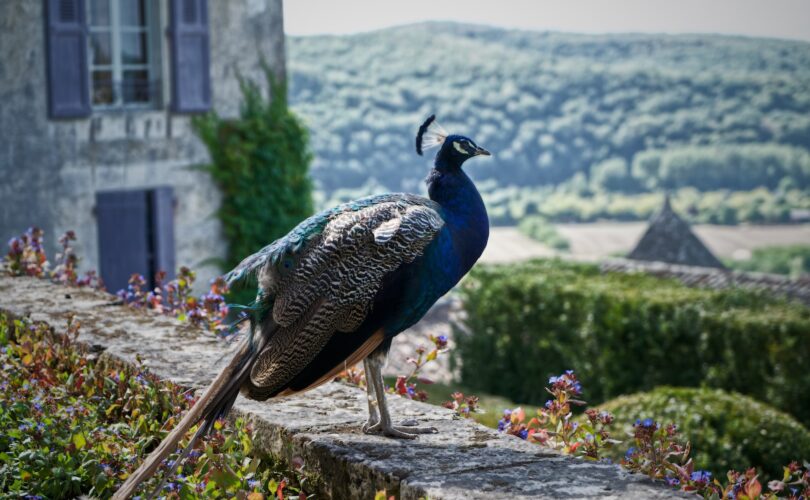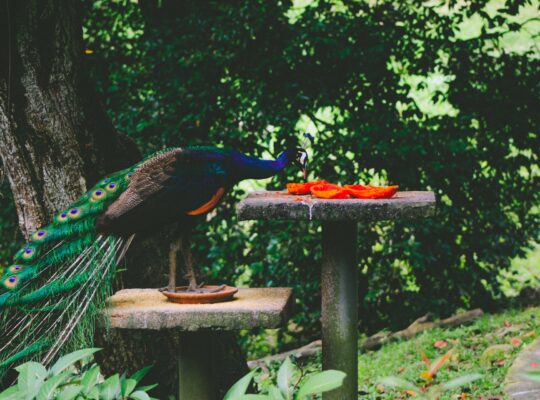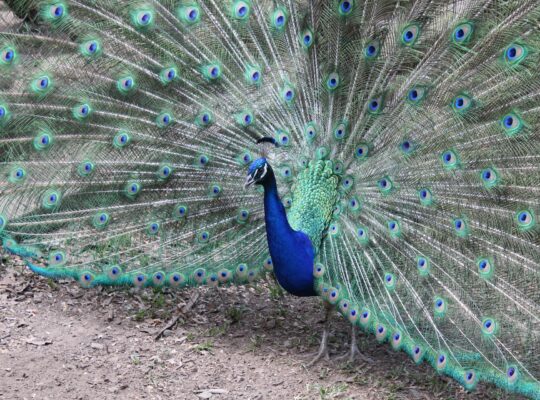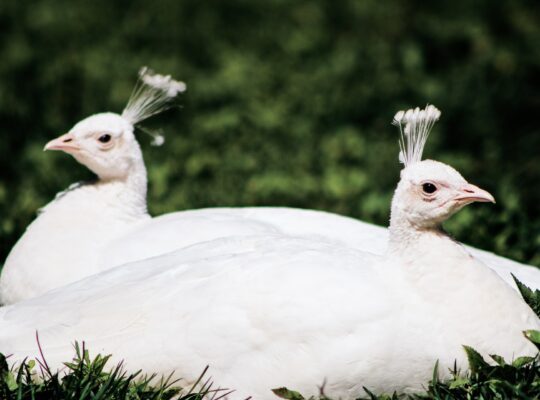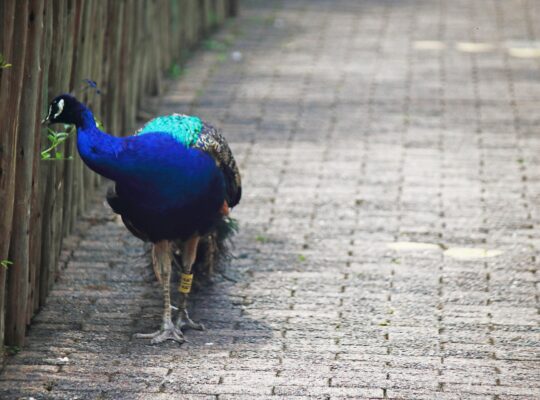Birds belonging to the pheasant family include peacocks. Peafowl is another name for these birds. The male of this species possesses tail feathers that are brilliantly colored, which it utilizes to lure a potential partner. The female is known as a peahen, and even though she is less colorful than the male, she is still rather lovely.
When it comes to laying eggs peacocks lay, peacocks usually lay between four and six eggs at a time, but they can lay up to eight eggs in a single clutch. Most of the time, the eggs are laid in a nest on the ground. The eggs are usually pale green or blue. Peahens usually lay one egg a day and keep laying eggs until they have finished their clutch.
Approximately twenty-eight days after she has laid the eggs, the hen will tend to them as best she can. During this period, she won’t venture outside of the nest at all, and the male will bring her food. The chicks can move and feed on their own almost as soon as they have hatched from their eggs. They can also take flight just a few short weeks after they have hatched.
Peafowl is well-known for their propensity to communal nesting, which means that they lay their eggs in the same nests as another. This is an important fact to keep in mind. Because of this, it is challenging to calculate the total number of eggs produced by a single peahen. In addition, the eggs that are laid by peahens are vulnerable to being eaten by a wide variety of predators, such as snakes, raccoons, and other birds, as well as other birds.
Peahens typically lay between four and six eggs every clutch; however, this amount varies from hen to hen. The eggs, usually pale green or blue, are placed in a nest on the ground. Chicks can move and feed themselves practically immediately after hatching, and the incubation lasts around 28 days.
How many eggs does a peacock lay in a year?
A clutch of peacock eggs typically includes between four to eight unique eggs. However, the exact number might vary. The quantity of eggs that a peacock lays in a year is somewhat determined by the season, the amount of food that is easily accessible, and several other factors of the environment in which it lives. Peacocks are known for their elaborate courtship rituals. A female peacock will lay two or three eggs each year for her young, depending on the length of the year.
The female peacock starts to lay eggs in late spring or early summer. She will lay between four and eight eggs in a clutch and between two and three clutches a year. Before the eggs hatch, they must be warm for about 28 days. If a peahen loses a grip, she will lay another one. Most of the eggs a female peacock lays in a year are oval and white. They are about 60g and a little bigger than a hen’s egg and 50mm long and 35mm wide. The eggs are shiny on the outside and have thin shells.
The male peacock does not help raise the young, including building nests, incubating eggs, or caring for them once they hatch. After mating, he will depart the region and return when the chicks are old enough to fly.
The average clutch size for a female peacock is 4-8 eggs, and she may lay 2 or 3 clutches each year. Small and white, the eggs are uncommon. When the female peacock builds the nest, she performs all of the work, and the male peacock has nothing to do with it.
How often do Peahens Lay Eggs
Peahens only lay eggs once a year, around the time of the spring equinox in March or April. The hen will lay four to six eggs over a few days. Most of the time, the eggs are pale green and about the size of a chicken egg. The eggs are laid in a nest made of grass and other plants. The nest is usually high up in a tree or bush.
Peahens lay eggs yearly, but they might skip a year if the weather is bad or sick. After 28 days, the eggs usually hatch, and the chicks are ready to leave the nest after 4-5 weeks. If the weather isn’t good or if the peahen is sick, she may leave her eggs before they hatch.
Do peahens lay eggs without a mate?
Egg-laying in peahens requires a male companion. Peahens can only start laying eggs with a male peafowl to fertilize them. When choosing a mate, peahens are pretty selective and tend to go for males with vivid plumage and a bushy tail. A peahen will lay an egg or two every day after mating until she produces a clutch of five to eight eggs.
Peahens would need to be artificially inseminated to lay eggs even if they didn’t have a mate. A trained veterinarian must insert a syringe with sperm from a male peafowl into the female’s reproductive system. Artificial insemination is used sparingly with peahens and is usually only done with rare or endangered peafowl species.
Peahens can also lay eggs even if they don’t have a mate if they are given hormones or other chemicals that make them want to lay eggs. Some of these hormones can be provided with a syringe, but there are better ways to do it than this because the eggs usually don’t grow.
In conclusion, unmated peahens are an unusual occurrence. To lay eggs, a peahen often has to locate a mate. It is feasible to do artificial insemination, although this is rarely done since hormones used to increase egg production are only sometimes effective.

